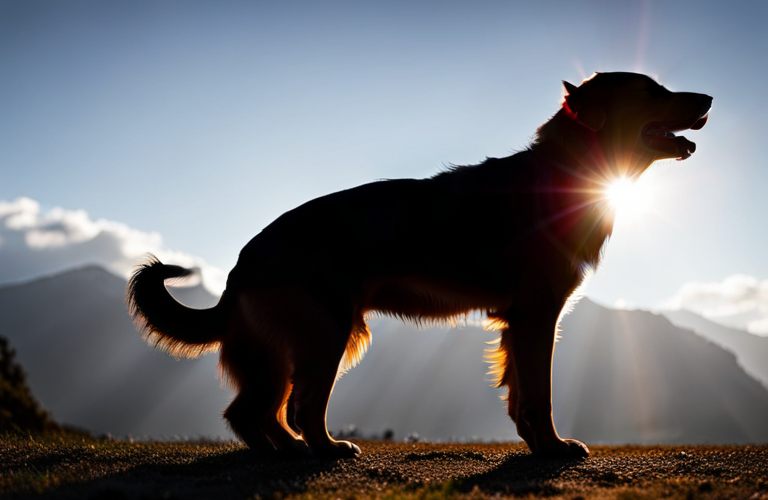The most important training techniques to use when training your dog can vary depending on the specific needs and temperament of your canine companion. However, there are a few universally effective techniques that should be incorporated into any dog training regimen. In this ultimate guide to effective dog training, I will provide you with a step-by-step approach that will help you establish a strong bond with your dog while achieving desired behavioral outcomes.
1. Positive Reinforcement:
Positive reinforcement is an essential training technique that relies on rewarding desired behaviors to encourage their repetition. This method avoids the use of punishment and instead focuses on rewarding good behavior with treats, praise, or play. By associating rewards with specific actions, your dog will quickly learn what behaviors are desirable.
2. Clicker Training:
Clicker training is a popular technique that utilizes a small handheld device, called a clicker, to mark desired behavior. This method pairs the sound of the clicker with a reward, which helps to communicate to the dog that they have done something right. The clicker becomes a powerful tool in effectively shaping your dog's behavior and facilitating learning.
3. Target Training:
Target training involves teaching your dog to touch a specific object, such as a stick your hand, with their nose paw. This technique allows for precise control over your dog's movements, making it easier to teach them commands such as sit, stay, and heel. Target training can also be used to redirect unwanted behaviors into more acceptable actions.
4. Socialization:
Socialization is a crucial aspect of dog training, especially for puppies. Exposing your dog to a wide range of people, animals, and environments at an early age helps them develop the necessary social skills and reduces the likelihood of fear or aggression later on. Regularly taking your dog to the park, on walks, and to dog-friendly places will provide opportunities for positive social interactions.
5. Consistency and Persistence:
Consistency is key in dog training. Ensure that all members of your household use the same commands, gestures, and reward system to avoid confusing your dog. It is also important to be persistent and patient during the training process. Dogs learn at different paces, and it takes time and repetition for them to fully grasp new commands or behaviors.
6. Differential Reinforcement:
Differential reinforcement involves rewarding and reinforcing alternative behaviors while ignoring or redirecting unwanted behaviors. This technique focuses on positively reinforcing the behaviors you want to see more of, rather than punishing those you want to discourage. For example, if your dog jumps on guests, teach them to sit instead and reward them for doing so.
7. Training in Various Environments:
To ensure that your dog generalizes their training to different settings, it is crucial to practice commands and behaviors in various environments. Start training in a quiet and familiar space, gradually increasing distractions and complexity. Training your dog in different locations will help them understand that commands apply in all situations, leading to reliable obedience.
Remember, effective dog training requires time, patience, and a genuine commitment to understanding and meeting your dog's needs. The techniques mentioned in this ultimate guide are proven to be highly effective, but it is essential to tailor your training methods to suit your dog's individual temperament and personality. If you encounter any challenges, working with a professional dog trainer can provide invaluable guidance and support.
What are the best techniques for teaching basic obedience commands?
Title: The Ultimate Guide To Effective Dog Training: A Step-by-step Approach
Answer:
Teaching basic obedience commands to your furry friend is an essential aspect of dog training. A well-behaved dog not only leads to a harmonious coexistence but also ensures their safety and your peace of mind. In this comprehensive guide, I will walk you through the best techniques for teaching basic obedience commands, aiding you in establishing a strong foundation for your dog's training.
1. Start with Positive Reinforcement:
Using positive reinforcement as a training technique is effective and creates a positive learning experience for your dog. Positive reinforcement involves rewarding your dog with treats, praise, or playtime when they successfully respond to a command. This method helps your dog associate obedience with positive outcomes, enhancing their motivation to follow your instructions willingly.
2. Use Clicker Training:
Clicker training is a powerful tool that enhances communication between you and your dog. It involves using a small handheld device that produces a distinctive sound, like a click, to mark the precise moment your dog performs a desired behavior. Coupled with positive reinforcement, clicker training helps your dog understand and respond promptly to specific commands.
3. Break Commands Down into Smaller Steps:
When teaching basic obedience commands, it's crucial to break them down into smaller, manageable steps. For example, if you're teaching the “sit” command, start by luring your dog into a sitting position using a treat. Gradually phase out the lure, introducing a verbal cue and hand signal, and then reinforce the behavior with positive reinforcement. By breaking the command into smaller steps, your dog comprehends the individual components, making the overall training process more effective.
4. Consistency is Key:
Consistency plays a vital role in teaching basic obedience commands. Ensure everyone in your household uses the same commands, hand signals, and training techniques to avoid confusion. Consistency also applies to your expectations and rules, as dogs thrive in structured environments. A consistent training routine helps your dog understand and retain what you are trying to teach them.
5. Train in Different Environments:
Dogs are incredibly context-dependent learners, meaning they learn and generalize commands best when trained in various environments. Once your dog grasps a command indoors, gradually introduce distractions and train outdoors, such as in the backyard a park. By expanding their training experiences, you teach your dog to obey commands regardless of the surroundings, establishing a reliable obedience foundation.
6. Be Patient and Maintain a Positive Attitude:
Patience and a positive attitude are vital when training your dog. Dogs respond best to enthusiasm and encouragement, so maintain a positive demeanor throughout the training process. Understand that learning requires time, and your dog may not grasp commands immediately. Frustration or impatience can hinder progress, so approach training sessions with a composed and optimistic mindset.
7. Seek Professional Help When Needed:
If you encounter difficulties or want to refine your training techniques, don't hesitate to seek professional help. Certified dog trainers possess expertise in various training methods and can provide individualized guidance tailored to your dog's specific needs. They can address any issues you face, ensuring effective and successful obedience training.
Remember, training your dog requires time, effort, and dedication. Following these techniques, coupled with the step-by-step approach outlined in “The Ultimate Guide To Effective Dog Training,” will set you and your canine companion up for a lifetime of obedience and companionship.
Disclaimer: This is a general response to the Quora question “What are the best techniques for teaching basic obedience commands?” and may not cover all niche-specific training requirements. Always consult a professional to ensure the best practices for your specific dog breed and training goals.
How can I use positive reinforcement to train my dog?
Title: The Ultimate Guide to Effective Dog Training: A Step-by-Step Approach
Answer:
Positive reinforcement is a highly effective and humane method of training your dog, focusing on rewarding desired behaviors rather than punishing unwanted ones. By understanding and implementing the principles of positive reinforcement, you can establish a strong bond with your dog while teaching them vital commands and behaviors. Here's a step-by-step approach to utilizing positive reinforcement for effective dog training:
1. Understanding the Principle of Positive Reinforcement:
Positive reinforcement works by rewarding behaviors you want to encourage, making them more likely to be repeated. It involves identifying desired actions or commands, offering immediate rewards, and reinforcing positive associations.
2. Identify Clear Goals:
Before commencing the training, set clear goals of what you want your dog to learn or achieve. Whether you're looking to teach basic commands like sit and stay, or more complex tasks, a specific set of goals will provide structure to your training sessions and keep you focused.
3. Choose the Right Rewards:
Determine what motivates your dog. Most dogs respond well to treats, verbal praise, or affectionate petting. Experiment with different types of rewards to identify those that truly spark your dog's interest and enthusiasm. High-value treats should be reserved for particularly challenging tasks or achievements.
4. Timing is Key:
Ensure that timing between the desired behavior and the reward is precise. Dogs associate and learn behaviors quickly when reinforcement is immediate and accurately timed. As soon as your dog exhibits the desired behavior, promptly offer the reward to reinforce the positive association.
5. Consistency and Repetition:
Consistency is key to effective dog training. Use the same command or cue consistently with your dog, and avoid confusing or changing them. Reinforce positive behaviors every time they occur, gradually reducing the frequency of rewards as your dog becomes proficient.
6. Commence with Basic Commands:
Start with basic commands like “sit,” “stay,” or “come.” These simple cues, when rewarded consistently, help establish a strong foundation for more advanced training. Remember to break down complex behaviors into smaller, manageable steps to avoid overwhelming your dog.
7. Progressive Training:
As your dog masters basic commands, commence more advanced training techniques like leash walking, crate training, or tricks. Gradually increase the difficulty level of tasks to challenge your dog's mental and physical abilities, always rewarding them for their accomplishments.
8. Maintain a Positive Attitude:
Dogs are highly attuned to their owner's emotions. Maintain a patient, positive, and encouraging attitude throughout training sessions. Consistent positivity helps alleviate any anxiety or stress your dog may feel, allowing them to learn and respond more effectively.
9. Redirect Unwanted Behaviors:
Instead of punishing your dog for unwanted behavior, redirect their attention towards a desirable alternative. For example, if your dog starts barking, redirect their attention with a command like “sit” or “quiet,” and reward them for listening to you.
10. Seek Professional Guidance if Needed:
If you face difficulties during the training process, don't hesitate to seek professional assistance from a qualified dog trainer. A professional can provide additional guidance, personalized strategies, and address any specific challenges you may encounter.
Remember, training your dog using positive reinforcement takes time, patience, and consistency. Embrace a proactive approach, focus on building a strong bond, and celebrate your dog's successes along the way. With a well-structured training plan and positive reinforcement techniques, you can effectively train your dog and create a harmonious and mutually fulfilling relationship.










Add comment